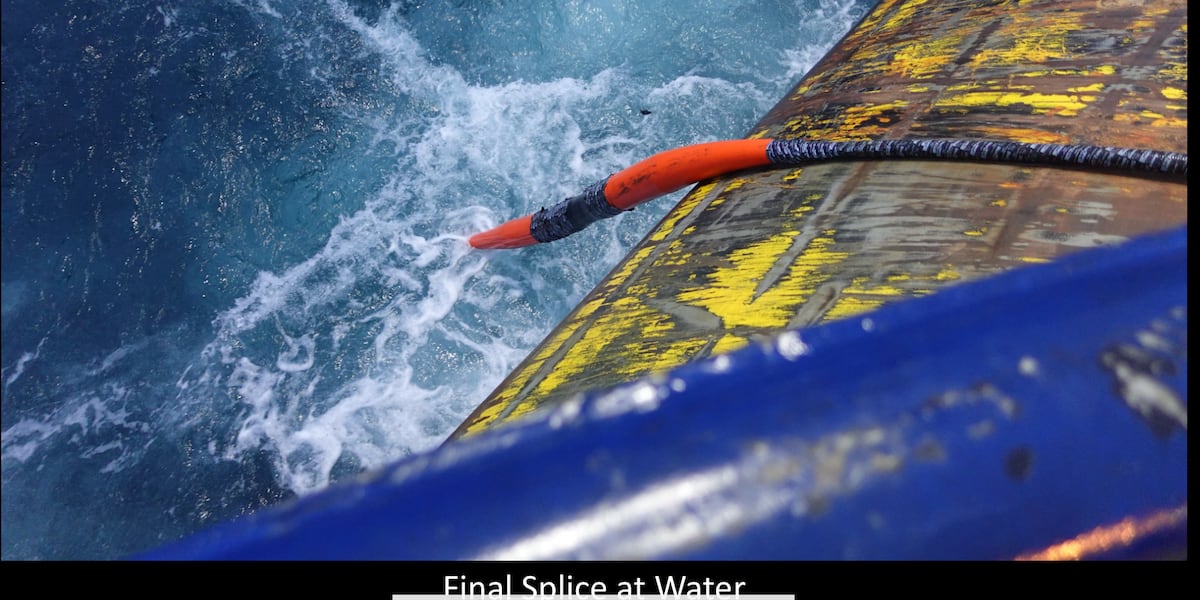Alaska
Rural Alaskans find solutions in the sky during internet outage
/cloudfront-us-east-1.images.arcpublishing.com/gray/4UAPAVP7YVE2TMPWIYWEC7CH2M.png)
WAINWRIGHT, Alaska (KTUU) – Rural Alaska has faced struggles with internet outages since an offshore fiber optic line was severed earlier this month. But residents and businesses in regions like the Bering Sea Coast and the North Slope have taken measures to work through the struggles of a lack of internet.
Melanie Bahnke, President of the Native corporation Kawerak, said the company was able to switch to its reserve Starlink system shortly after the outage and has since been using it for its offices.
“Currently, we do have some slowness of speeds — because we’re not on fiber, which is obviously the gold standard — but we are functional,” Bahnke said.
According to Bahnke, many residents of the community of Nome have also started using the satellite internet provider since the outages, including her own family.
“As of today, my husband has installed Starlink, because we’re being told that it won’t be until, at the earliest, August when the Quintillion fiber will be repaired again,” Bahnke said.
While Bahnke said that she is happy to have alternatives, she is looking forward to fiber optic internet becoming operational again.
Meanwhile, the situation on the North Slope is improving — but residents and businesses are still facing difficulties.
Samantha Wade of Wainwright said that her parent’s business is being affected, as cash is the only payment they can accept. Wade says that other businesses in the area are affected as well, and that the Starlink units that sent up to the region will not communicate with the credit card machines.
But that isn’t slowing its use in residences. Wainwright Mayor Chester Ekak estimates at least half of his village is now using Starlink.
“About, I’d say, maybe 60%, 50% of the homes have received Starlink. So everyone who needs to get online usually goes to their relative’s place or their neighbor’s and connects to the internet to conduct their business,” Ekak said.
Residents of Wainwright were without cellular service for about two weeks before it came back online, Ekak said, and that when he spoke with Arctic Slope Telephone Association half a week ago, they said home internet will be out for another three weeks.
Ekak said about five to 10 new Starlink orders come into Wainwright every day. Efforts are underway to repair the damaged offshore fiber optic line north of Utqiagvik.
Although frustrating, it’s not debilitating for those who are ready.
“We’re in rural Alaska — so we’re accustomed to having a backup plan,” Bahnke said.
Copyright 2023 KTUU. All rights reserved.

Alaska
Two Alaska Airlines 737 Planes Collided at Seattle Airport
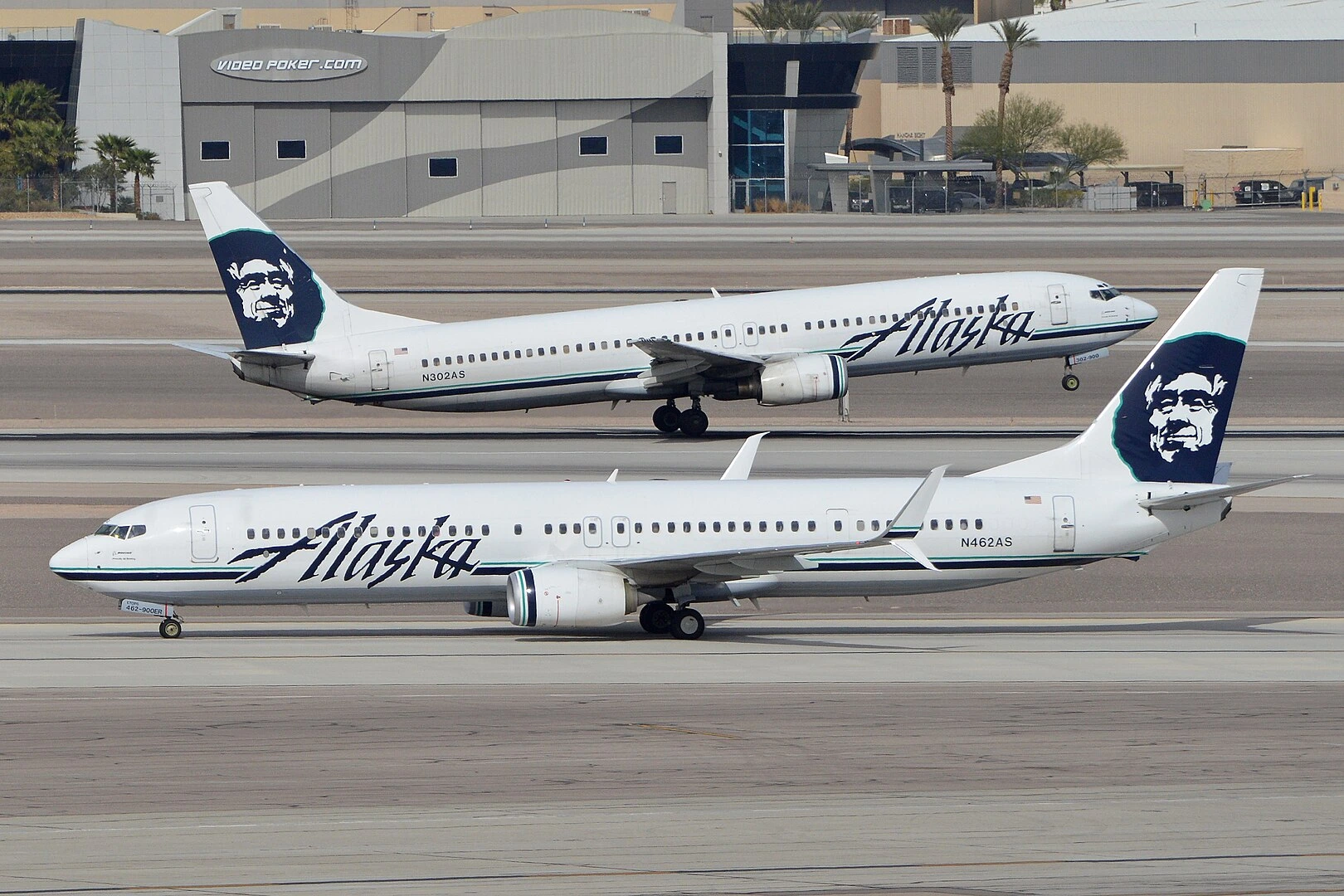
SEATTLE- Two Alaska Airlines (AS) planes collided while preparing for takeoff at Seattle-Tacoma International Airport (SEA), causing passengers to disembark and return to the gate. The incident involved a minor wingtip contact between a Boeing 737-800 and a 737-900, both scheduled for California destinations.
The collision occurred just after noon on Saturday (May 17, 2025) as ground-service tugs pushed the aircraft back from their gates. Flights to Orange County (SNA) and Sacramento (SMF) were impacted, though no injuries or significant delays were reported.
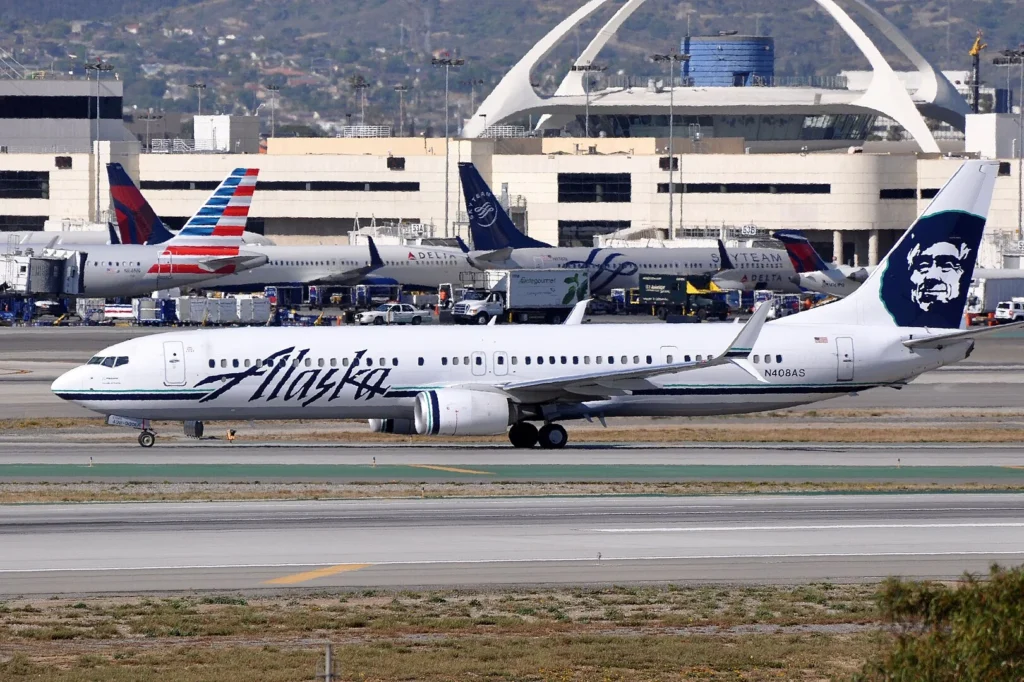
Alaska Airlines Planes Clip Wings at Sea-Tac
The wingtip collision between two Alaska Airlines Boeing 737 aircraft happened during a routine gate pushback at Seattle-Tacoma International Airport. The event occurred on a busy Saturday afternoon, a high-traffic period for departures.
According to Alaska Airlines, ground-service tugs were maneuvering both jets when the aircraft wings made contact.
Both jets were en route to California—one to Orange County John Wayne Airport (SNA) and the other to Sacramento International Airport (SMF).
While the incident did not result in any injuries, standard safety protocols required both aircraft to return to their gates. Passengers were promptly deplaned and later rebooked on alternate flights.
Kassie McKnight-Xi, spokesperson for the Port of Seattle, emphasized that the contact was minor and did not cause operational delays. The FAA confirmed it will investigate the circumstances surrounding the incident to assess compliance with aviation safety protocols and ground-handling procedures.
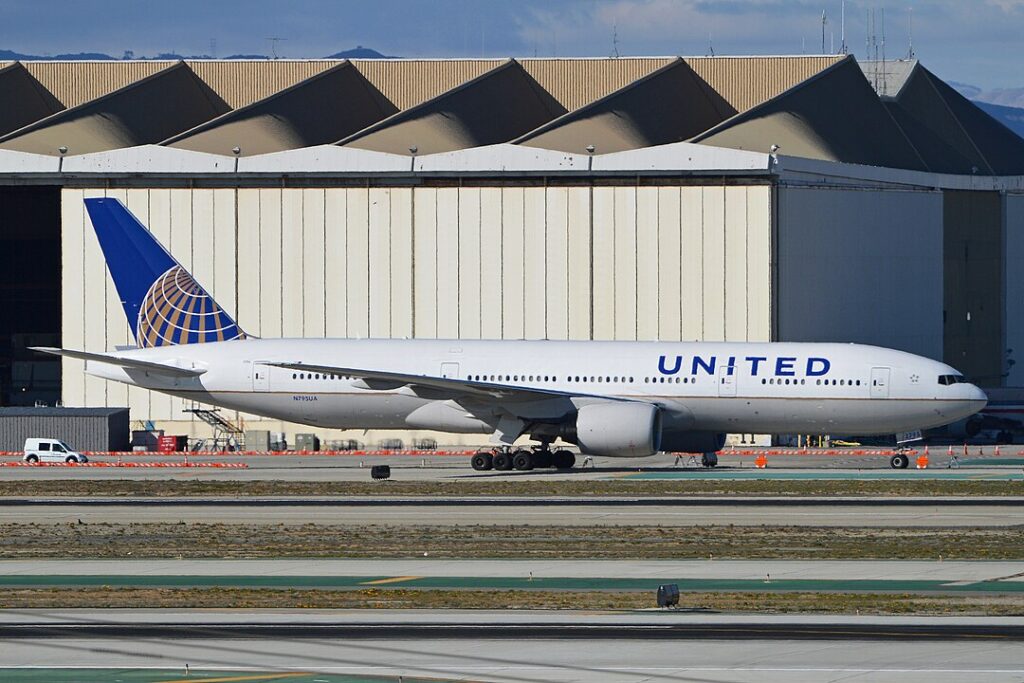

Similar Incidents
Two United Airlines (UA) Boeing 777-300ER aircraft collided at San Francisco International Airport on May 6, 2025, forcing the cancellation of both trans-Pacific flights. The incident occurred at approximately 12:35 AM local time when the right wingtip of United Flight UA863 struck the left wingtip of United Flight UA877 during pushback operations.
UA863, scheduled to depart for Sydney Airport, hit UA877, which was bound for Hong Kong International Airport, as both aircraft maneuvered near Terminal 2, Gate 6. The collision happened in an area where air traffic controllers do not directly communicate with flight crews, instead relying on ground crew coordination.
The impact caused visible damage to both aircraft’s wingtips. All 522 passengers and 32 crew members across both flights escaped injury. United Airlines immediately deplaned passengers and began rebooking them on alternative flights.
On February 5, a Japan Airlines (JL) Boeing 787-9 collided with a Delta Air Lines Boeing 737-800 at Seattle-Tacoma International Airport. The Japan Airlines aircraft arriving from Tokyo struck a Delta aircraft preparing for departure to Puerto Vallarta.
In January, American Airlines (AA) experienced two separate collision incidents.
On January 10, two American Airlines Boeing 737s made contact at New York’s LaGuardia Airport when an aircraft under tow struck the wing of a parked plane.
Two days earlier, on January 8, an American Airlines Boeing 737-800 hit the tail of a United Airlines Boeing 787-10 during taxiing operations at Chicago O’Hare International Airport.
Stay tuned with us. Further, follow us on social media for the latest updates.
Join us on Telegram Group for the Latest Aviation Updates. Subsequently, follow us on Google News
Alaska
Alaska Airlines planes clip wings at Seattle-Tacoma airport, prompting FAA probe
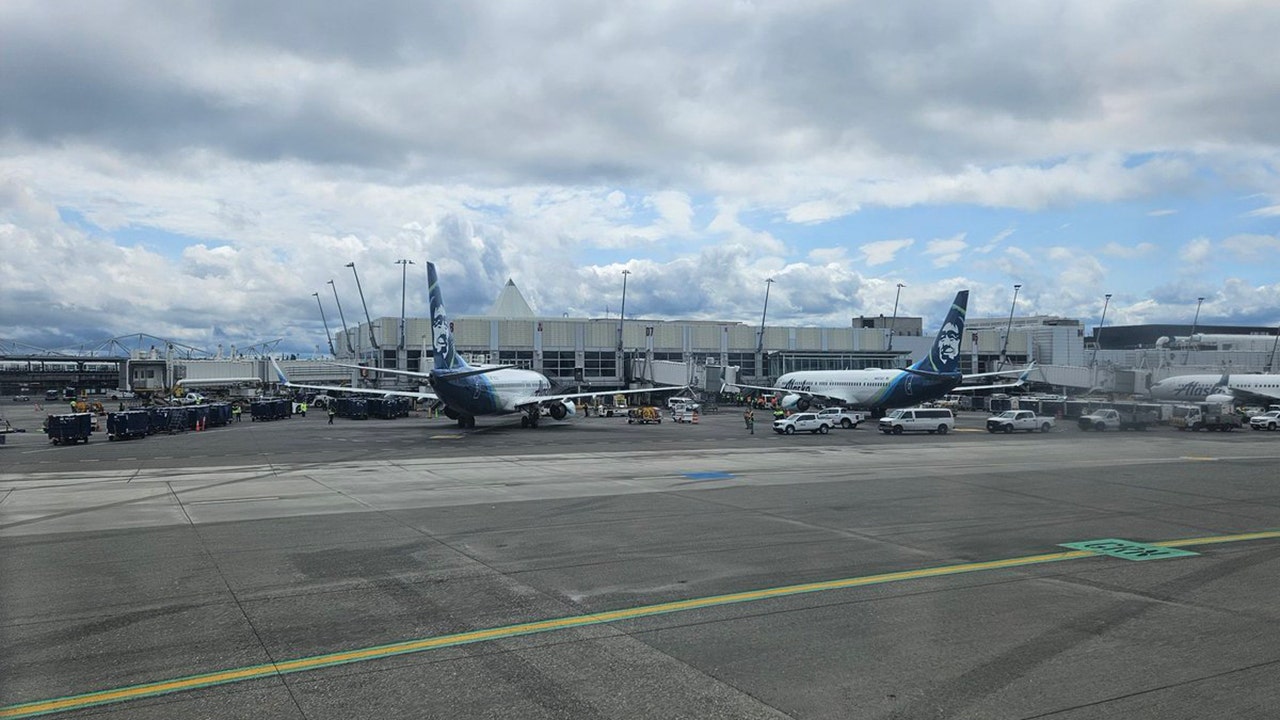
Fox News senior congressional correspondent Chad Pergram has the latest on aircraft travel issues on ‘The Bottom Line.’
The Federal Aviation Administration (FAA) is investigating after two Alaska Airlines planes clipped wings at a Seattle-Tacoma International Airport gate Saturday.
At about 12:15 p.m. local time, ground-service tugs were pushing back two aircraft from their gates when their winglets touched, an Alaska Airlines spokesperson told FOX Business.

Alaska Airlines flights 1190 and 1094 clipped wings Saturday. (LunatikMedic/Erik Luna / Fox News)
TRUMP CONTINUES TO DEFEND QATAR GIFTING US $400M JET: ‘WE SHOULD HAVE THE MOST IMPRESSIVE PLANE’
There were no injuries, the spokesperson said.
Passengers on the two flights deplaned at the gate, were transferred to other aircraft and departed a short time later.
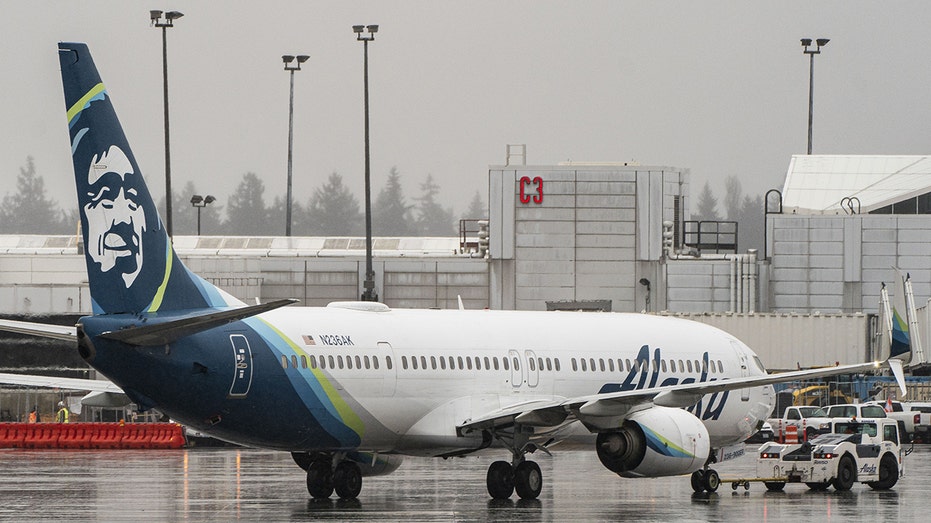
An Alaska Airlines Boeing 737-900ER aircraft on the tarmac at Seattle-Tacoma International Airport in Seattle. (David Ryder/Bloomberg via Getty Images / Getty Images)
MAJOR AIRLINE MAKES BIG CHANGE TO EASE TRAVEL WOES AMID CHAOS AT NEWARK AIRPORT
“We sincerely apologize to our guests for the delay and inconvenience,” an Alaska Airlines spokesperson said.
| Ticker | Security | Last | Change | Change % |
|---|---|---|---|---|
| ALK | ALASKA AIR GROUP INC. | 53.65 | +0.67 | +1.26% |

The FAA said it is investigating the Alaska Airlines incident. (Kevin Carter/Getty Images / FOXBusiness)
GET FOX BUSINESS ON THE GO BY CLICKING HERE
FAA air traffic control is not responsible for plane movements in the gate area, the agency wrote in a news release.
Alaska
As Alaska warms, Arctic geese are skipping their southern migration

Out on Izembek Lagoon, the water was flat and clear. Alison Williams, a biologist with the U.S. Fish & Wildlife Service, dipped her paddle in and steered her kayak toward the center of the lagoon, where the seagrass below runs thick.
“Everything below us is eelgrass,” she said. “It actually evolved on land and then evolved to go back into the water.”
The lagoon is the heart of the Izembek National Wildlife Refuge, a wide expanse of tundra and small lakes that stretches 310,000 acres across the Alaska peninsula, between the Pacific Ocean and the Bering Sea. It’s the smallest federal wildlife refuge in Alaska but one of the most important. It’s home to hundreds of thousands of birds: Pacific black brant, emperor geese, pintails and eiders.
This time of year, Izembek is famous as a stopover for migrating birds — a place to rest and refuel as hundreds of species move between their southern wintering grounds and the Arctic.
Refuge manager Maria Fossado underscores how central this place is for migration.
“Wildlife are very smart, and they like to capitalize on use of energy,” she said. “Their focus is feeding, resting and capitalizing on when food is available.”
Theo Greenly / KSDP
/
KSDP
As the Arctic warms, some birds, like the Pacific black brant, are cutting their migrations short and spending the winter at the refuge. Williams says declining sea ice has made it easier to find the resources they need.
“It used to be, in the ’80s, a couple thousand. Increasingly, more of them are staying all winter long. Fifty to sixty thousand — the thought is, the lagoon is freezing over less, we’re getting less ice, and so the brant can access the eelgrass,” she said.
The lagoon is Izembek’s crown jewel. It hosts one of the largest eelgrass beds in the world. So why fly 2,800 miles to winter in Mexico when it’s plenty warm here?
“It might freeze up and then melt a couple times during the winter now, which is part of why people think that the brant are staying over more during the winter,” Williams said.
But overwintering has its costs. Brant don’t have to fly as far — but surviving an Alaska winter takes more energy than it does in a warmer place. Williams calls it a game of trade-offs.
A study published in March the journal Movement Ecology looked at brant over a 10-year period. It found the benefits mostly cancel out: the energy saved on the commute is about the same as the energy spent making it through the colder winters.

Theo Greenly / KSDP
/
KSDP
A fragile habitat holds on — for now
Beneath Williams’ kayak, there was a sprawling underwater meadow — the eelgrass beds that fuel the entire ecosystem.
“There’s a lot of things that live in the eelgrass,” Williams added. “It’s good habitat for a huge array of things.”
Tiny snails and clams burrow into it. Fish shelter inside it. And birds like the black brant depend on it for the energy to migrate — or overwinter.
The U.S. Geological Survey surveyed the eelgrass cover at Izembek in 2016 and 2020.
“There was some loss of eelgrass in the central part of the lagoon, where we are now,” Williams said. “And then a couple areas where we actually gained a little bit.”
Overall, the survey found a slight decline — far less than the global average. Worldwide, scientists estimate that about 30% of eelgrass habitat has vanished, hit hard by warming waters, pollution and invasive species.
Izembek remains one of the largest intact strongholds for this vital ecosystem. But in a warming world, even the most remote places are changing.
-

 Austin, TX1 week ago
Austin, TX1 week agoBest Austin Salads – 15 Food Places For Good Greens!
-

 Technology1 week ago
Technology1 week agoNetflix is removing Black Mirror: Bandersnatch
-

 World1 week ago
World1 week agoThe Take: Can India and Pakistan avoid a fourth war over Kashmir?
-

 News1 week ago
News1 week agoReincarnated by A.I., Arizona Man Forgives His Killer at Sentencing
-

 News1 week ago
News1 week agoWho is the new Pope Leo XIV and what are his views?
-

 Politics1 week ago
Politics1 week agoDepartment of Justice opens criminal investigation into NY AG Letitia James
-

 World1 week ago
World1 week agoNew German chancellor aims for stronger EU ties with France and Poland
-

 News1 week ago
News1 week agoJudge Orders Release of Rumeysa Ozturk, Tufts Student Detained by ICE


